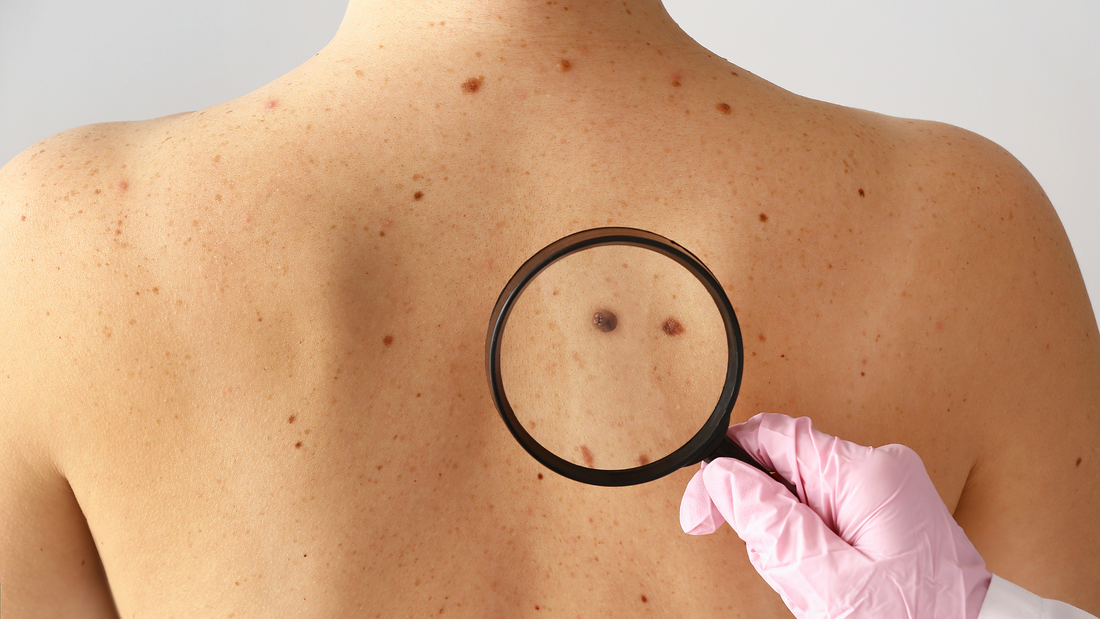
How is Mole Mapping Used to Detect Skin Cancer?
Share
Mole mapping, also known as digital mole mapping or total body photography, is a cutting-edge technique used to monitor moles and other skin lesions over time. This method is particularly useful for early detection of skin cancer, especially melanoma, which is the deadliest form. For those at higher risk or with numerous moles, mole mapping provides a reliable way to track changes and identify suspicious spots early.
Let’s explore how mole mapping works, its benefits, and who should consider this screening method.
What is Mole Mapping?
Mole mapping involves taking detailed photographs of the entire body to create a visual record of all moles and skin lesions. These high-resolution images serve as a baseline that dermatologists can use to compare and track changes over time. Mole mapping is usually done by a dermatologist in a clinical setting, using advanced cameras and software designed specifically for this purpose.
During the process, the dermatologist or trained technician will photograph various areas of the body, ensuring that every mole is documented. Some systems even allow close-up images of individual moles, which can be analyzed and compared with previous images using specialized software.
How Does Mole Mapping Help Detect Skin Cancer?
1. Early Detection Through Comparison
Mole mapping helps dermatologists detect skin cancer early by highlighting changes in moles that could indicate malignancy. When a new mole appears, or an existing one starts to change in size, shape, color, or texture, it may be a sign of skin cancer. With mole mapping, dermatologists can easily compare past and current images to detect even subtle changes that might otherwise go unnoticed.
2. Monitoring High-Risk Individuals
People with numerous moles, a family history of melanoma, or a history of severe sunburns are at a higher risk of developing skin cancer. For these individuals, mole mapping is an invaluable tool. It enables regular and systematic monitoring of their skin, reducing the risk of missing an abnormal mole or lesion.
3. Better Precision and Objectivity
Without mole mapping, it can be challenging to remember the exact appearance of every mole, especially if you have many. Mole mapping provides an objective, accurate record that allows dermatologists to track changes with high precision. This method can detect minor changes that may be significant, supporting early diagnosis and treatment.
4. Time Efficiency
For those with many moles, a thorough skin check can take considerable time. With mole mapping, dermatologists can quickly assess each mole by reviewing images rather than re-examining the entire body. This streamlines the process and allows for quicker, more efficient appointments.
Who Should Consider Mole Mapping?
Mole mapping is beneficial for anyone with:
- A large number of moles (especially if they are irregular or large)
- A personal or family history of melanoma
- Fair skin or a history of frequent sunburns
- Moles that have shown changes in the past
Even if you don’t fall into these categories, mole mapping can be a proactive way to manage skin health, especially for those concerned about skin cancer.
Final Thoughts
Mole mapping is an excellent tool for catching skin cancer early and offers peace of mind for those at risk. By providing a clear, objective record of your skin, it makes detecting changes easier, allowing for prompt evaluation and treatment if needed.
If you have a large number of moles or a personal history of skin cancer, talk to your dermatologist about whether mole mapping might be right for you. Early detection saves lives, and mole mapping can be an essential part of your skin care and cancer prevention strategy.
